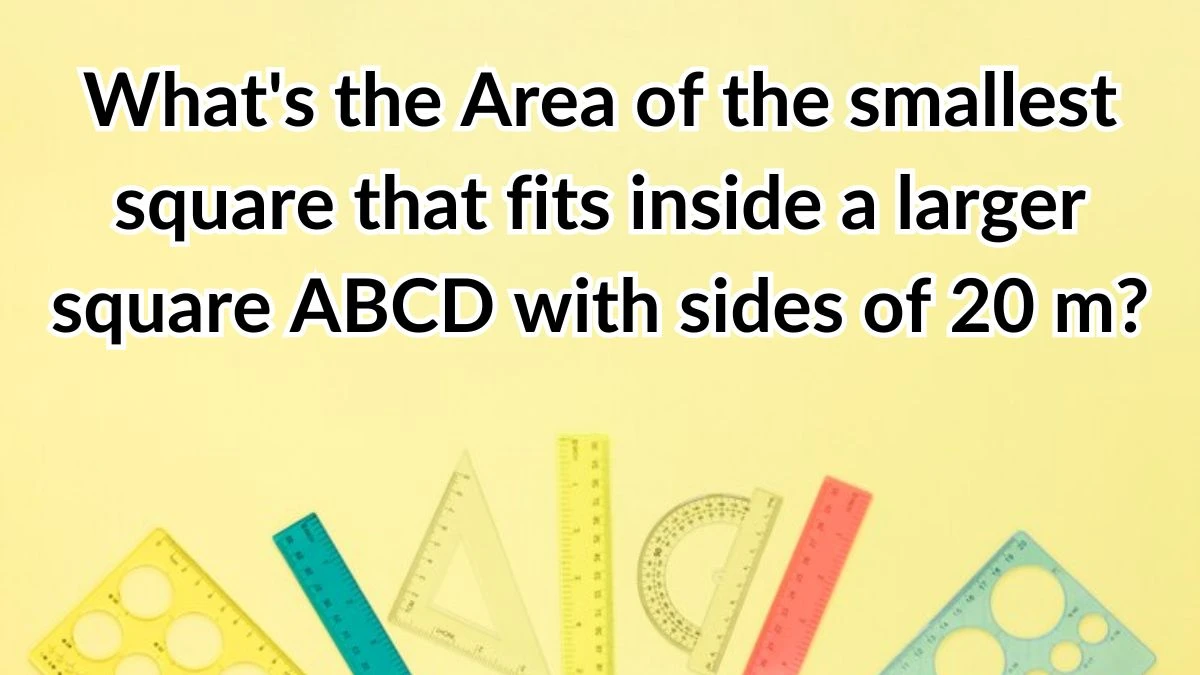What's the Area of the smallest square that fits inside a larger square ABCD with sides of 20 m?
by
Updated Jul 17, 2024

What's the Area of the smallest square that fits inside a larger square ABCD with sides of 20 m?
To determine the area of the least-sized square that can be inscribed within square ABCD with sides of 20 m each, use the following steps.
The smallest square that can fit inside square ABCD will have its vertices touching the midpoints of sides AB, BC, CD, and DA.
By connecting these midpoints, we form a smaller square. The side length of this inscribed square can be found using the Pythagorean theorem or by recognizing geometric properties of squares.
Given that ABCD has sides of 20 m each, the diagonal of ABCD can be calculated using
√20² + 20² = √800 = 20√2
The side length of the inscribed square will be
(20√2)/2 = 10√2 meters
Once we have the side length
s = 10√2
we use the formula for the area of a square to find the area of the inscribed square
A = s²
Therefore, the area of the least-sized square that can be inscribed in square ABCD is
(10√2)² = 200 m²
Inscribing a Square within a Square Concept
In geometry, inscribing a square within another square involves placing a smaller square such that its vertices lie on the sides of the larger square. This geometric configuration is of particular interest in various mathematical contexts, including
Geometric Construction:
The process of inscribing a square within another square relies on geometric principles such as symmetry and proportion. By connecting the midpoints of the sides of the larger square, one can construct a smaller square whose sides are parallel to those of the larger square.
Calculating Dimensions:
Determining the dimensions of the inscribed square often involves trigonometric or geometric methods. For a square with known side lengths, the side length of the inscribed square can be found using properties like the Pythagorean theorem or the relationship between the diagonals and sides of squares.
Area Calculation:
Once the side length of the inscribed square is known, its area can be calculated using the formula A = s², where s is the side length of the square. This provides a precise measure of the enclosed area within the larger square.
Mathematical Applications:
In mathematical problems and puzzles, inscribed squares are used to explore concepts such as geometric transformations, area relationships, and optimization of space. They also serve as examples in proofs related to geometric theorems and constructions.
Beyond theoretical applications, the concept of inscribed squares finds practical use in fields such as architecture and engineering, where maximizing enclosed space or ensuring structural integrity often involves understanding how smaller shapes fit within larger ones.




